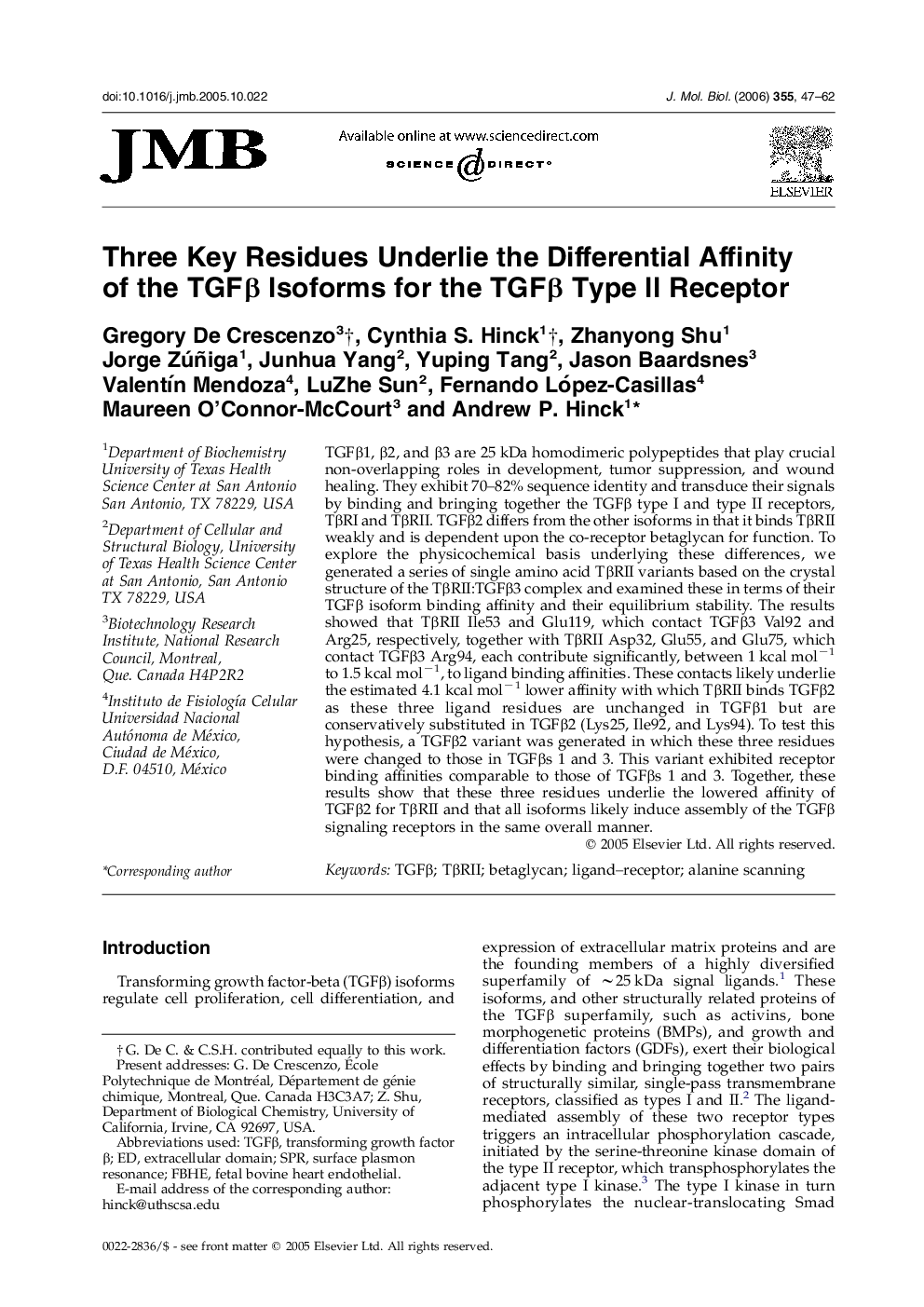| Article ID | Journal | Published Year | Pages | File Type |
|---|---|---|---|---|
| 2190268 | Journal of Molecular Biology | 2006 | 16 Pages |
TGFβ1, β2, and β3 are 25 kDa homodimeric polypeptides that play crucial non-overlapping roles in development, tumor suppression, and wound healing. They exhibit 70–82% sequence identity and transduce their signals by binding and bringing together the TGFβ type I and type II receptors, TβRI and TβRII. TGFβ2 differs from the other isoforms in that it binds TβRII weakly and is dependent upon the co-receptor betaglycan for function. To explore the physicochemical basis underlying these differences, we generated a series of single amino acid TβRII variants based on the crystal structure of the TβRII:TGFβ3 complex and examined these in terms of their TGFβ isoform binding affinity and their equilibrium stability. The results showed that TβRII Ile53 and Glu119, which contact TGFβ3 Val92 and Arg25, respectively, together with TβRII Asp32, Glu55, and Glu75, which contact TGFβ3 Arg94, each contribute significantly, between 1 kcal mol−1 to 1.5 kcal mol−1, to ligand binding affinities. These contacts likely underlie the estimated 4.1 kcal mol−1 lower affinity with which TβRII binds TGFβ2 as these three ligand residues are unchanged in TGFβ1 but are conservatively substituted in TGFβ2 (Lys25, Ile92, and Lys94). To test this hypothesis, a TGFβ2 variant was generated in which these three residues were changed to those in TGFβs 1 and 3. This variant exhibited receptor binding affinities comparable to those of TGFβs 1 and 3. Together, these results show that these three residues underlie the lowered affinity of TGFβ2 for TβRII and that all isoforms likely induce assembly of the TGFβ signaling receptors in the same overall manner.
